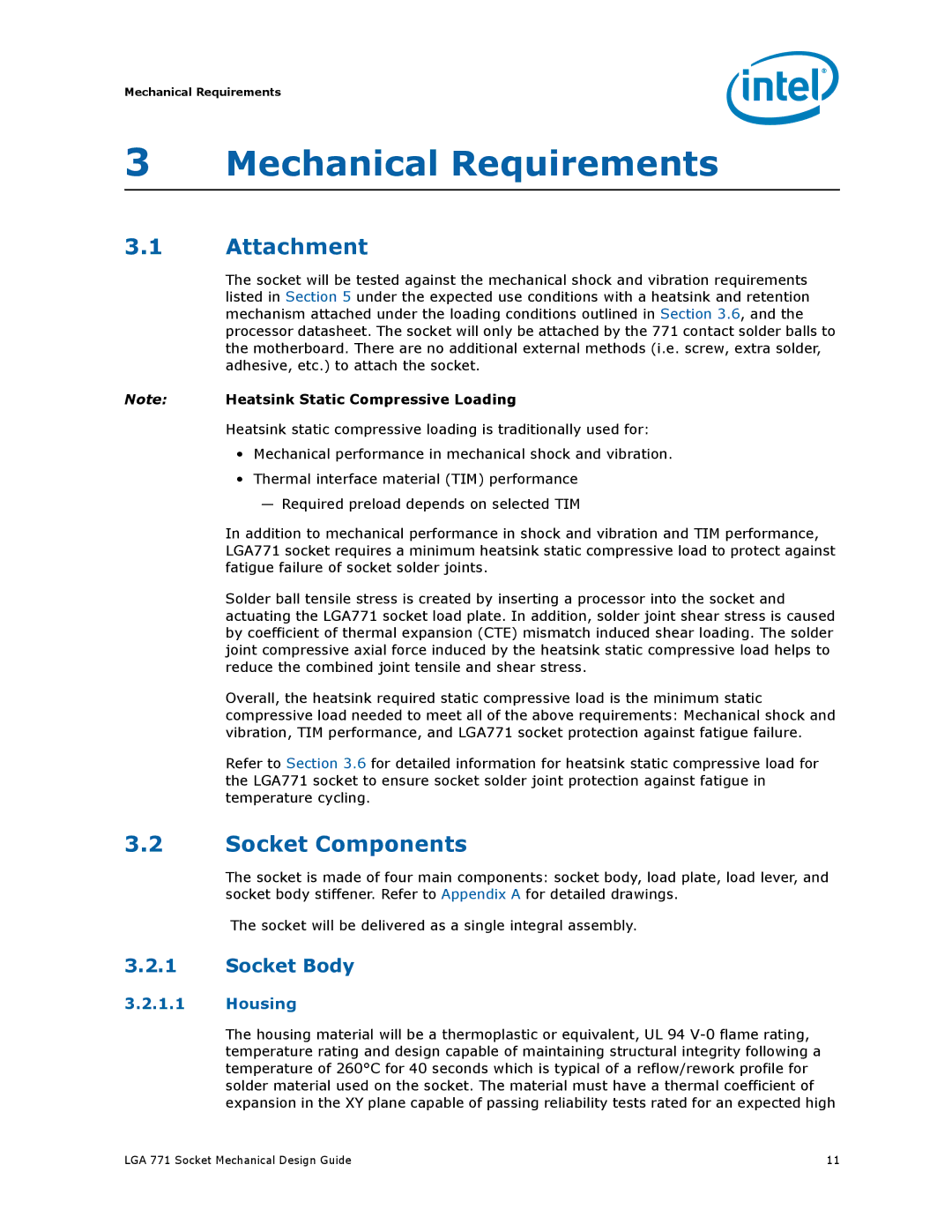
Mechanical Requirements
3Mechanical Requirements
3.1Attachment
The socket will be tested against the mechanical shock and vibration requirements listed in Section 5 under the expected use conditions with a heatsink and retention mechanism attached under the loading conditions outlined in Section 3.6, and the processor datasheet. The socket will only be attached by the 771 contact solder balls to the motherboard. There are no additional external methods (i.e. screw, extra solder, adhesive, etc.) to attach the socket.
Note: Heatsink Static Compressive Loading
Heatsink static compressive loading is traditionally used for:
•Mechanical performance in mechanical shock and vibration.
•Thermal interface material (TIM) performance
—Required preload depends on selected TIM
In addition to mechanical performance in shock and vibration and TIM performance, LGA771 socket requires a minimum heatsink static compressive load to protect against fatigue failure of socket solder joints.
Solder ball tensile stress is created by inserting a processor into the socket and actuating the LGA771 socket load plate. In addition, solder joint shear stress is caused by coefficient of thermal expansion (CTE) mismatch induced shear loading. The solder joint compressive axial force induced by the heatsink static compressive load helps to reduce the combined joint tensile and shear stress.
Overall, the heatsink required static compressive load is the minimum static compressive load needed to meet all of the above requirements: Mechanical shock and vibration, TIM performance, and LGA771 socket protection against fatigue failure.
Refer to Section 3.6 for detailed information for heatsink static compressive load for the LGA771 socket to ensure socket solder joint protection against fatigue in temperature cycling.
3.2Socket Components
The socket is made of four main components: socket body, load plate, load lever, and socket body stiffener. Refer to Appendix A for detailed drawings.
The socket will be delivered as a single integral assembly.
3.2.1Socket Body
3.2.1.1Housing
The housing material will be a thermoplastic or equivalent, UL 94
LGA 771 Socket Mechanical Design Guide | 11 |
